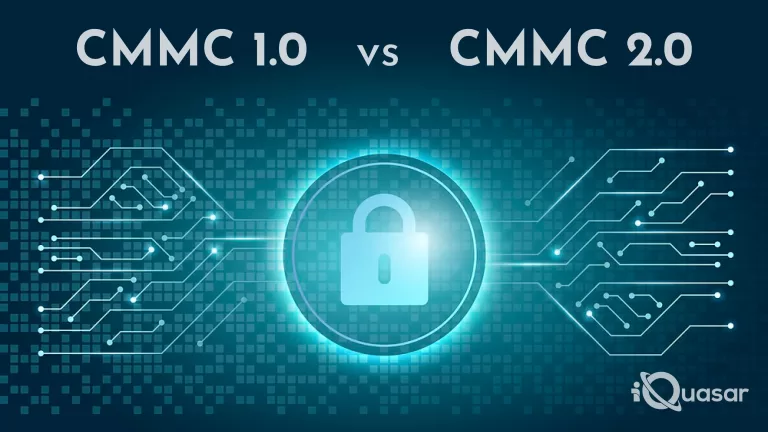
After almost a year of speculation, the Under Secretary of Defense (OUSD A&S) announced a new strategic direction for the Cybersecurity Maturity Model Certification (CMMC) Framework, and refined the CMMC 1.0 to CMMC 2.0.
The new version of the CMMC model impacts multiple aspects of CMMC compliance, including changes to mandatory assessment, levels, practices of the model, implementation, and certification. The new model is believed to be introduced due to feedback from the industry and concerns from some small and medium-sized businesses. This blog reviews a summary of the changes and highlights, and their impact on CMMC compliance in general.
CMMC 2.0 is consolidated into three levels instead of five in the previous model, as illustrated in the below table:
Once DoD completes all the formalities, the new CMMC 2.0 model will become a contract requirement. The changes reflected in CMMC 2.0 will be implemented through the rule-making process; the requirements for rule-making are expected to be completed in the next 9 to 24 months. DoD intends to pursue rule-making both in Part 32 of the Code of Federal Regulations (C.F.R.) and in the Defense Federal Acquisition Regulation Supplement (DFARS) in Part 48 of the C.F.R. While these rule-making efforts are ongoing, the Department intends to suspend the current CMMC piloting efforts and will not approve the inclusion of a CMMC requirement in any DoD solicitation. Based on the information that DoD vendors handle, the impact varies in the new model. The DoD vendors may fall into any one of the three levels, depending on the vendor’s service. Below is a summary of the CMMC 2.0 model maturity levels and the corresponding vendor data as per the initial DIB analysis:
The impact of CMMC 2.0 can be substantial on DoD contractors and industry in general, following cybersecurity controls. The following section illustrates a summary of some of the impacts that can be expected as a result of the new model:
Cybersecurity will not go away as a need, and it looks like CMMC 2.0 is intended to not just simplify but also accelerate compliance. There are a few more things to think about as you continue to construct your security operations.
If you have already created security plans, made tactical and strategic plans, documented controls for people, process, and technology, have risk mitigation strategies in place, computed your risk ratings, and submitted your Supplier Performance Risk System (SPRS) score, you are ready to take on CMMC 2.0 in a short period. Most likely, you detected security weaknesses and will need to adopt security controls to mitigate risk. Mitigating cyber risk is a never-ending process, and as a result, the actions are continually in motion. During the rule-making process, the Department of Defense urges contractors to continue to improve their cybersecurity posture and is looking into ways to reward contractors who voluntarily earn CMMC certification during that time. So, with the arrival of CMMC 2.0, don’t lose momentum in preparing for compliance with the existing CMMC model.
Continue to plan for CMMC 2.0 compliance using CMMC 1.0 as a starting point. Defense contractors appear to benefit by lowering maturity levels, eliminating third-party assessments, and introducing waivers. However, as with CMMC 1.0, compliance with CMMC 2.0 means that basic or advanced cyber hygiene and security procedures must still be installed, maintained, and documented. The method of implementation may have changed, but the idea of reducing cyber risk has not. If your organization fails to comply with CMMC 2.0, the chances of losing a DoD contract are substantial. DoD has adopted the position of making compliance simple for select firms without sacrificing cybersecurity safeguards. If a defense contractor wants to stay relevant, it must be clear in its strategy that cybersecurity is at the top of the priority list.
iQuasar Cyber, Inc. is a Registered Provider Organization (RPO) and has a team of experienced cybersecurity consultants and assessment experts who conduct various cybersecurity assessments at a high quality and with professionalism. iQuasar Cyber’s cybersecurity team has conducted different types of compliance and provided guidance in combating cybersecurity risks to its clients. Some of the compliance assessment work provided by the iQuasar Cyber team includes ISO 9001:2015, ISO 27001, FFIEC, HIPAA, NIST 800-53, NIST 800-63, CCPA, GDPR, etc.